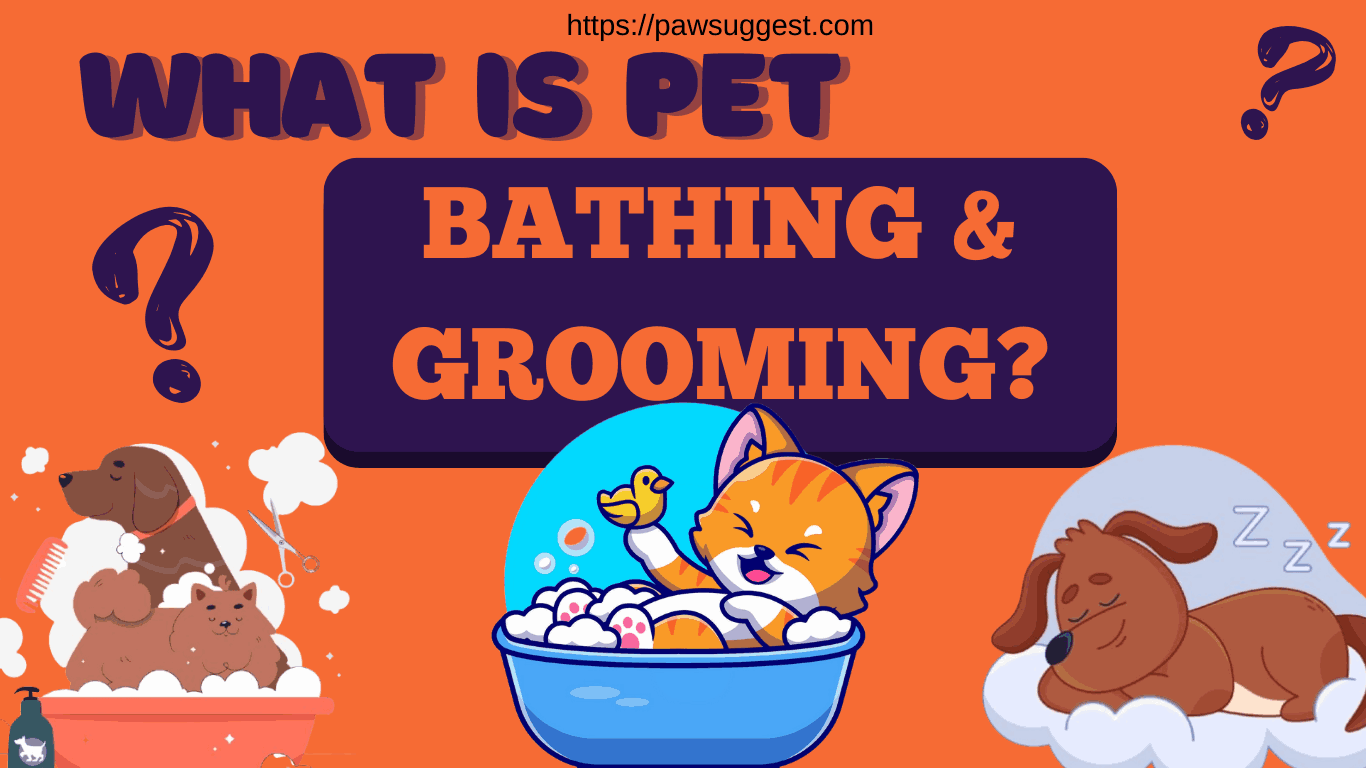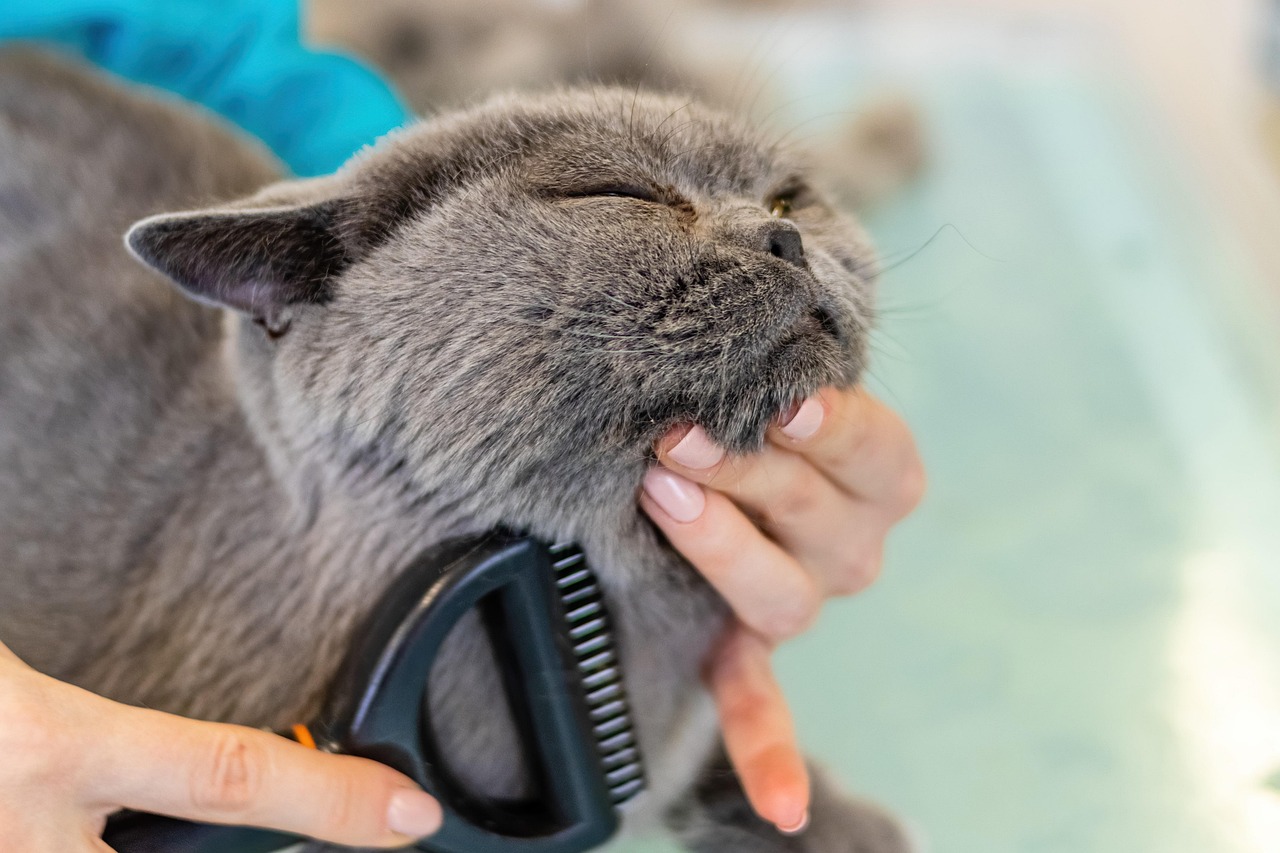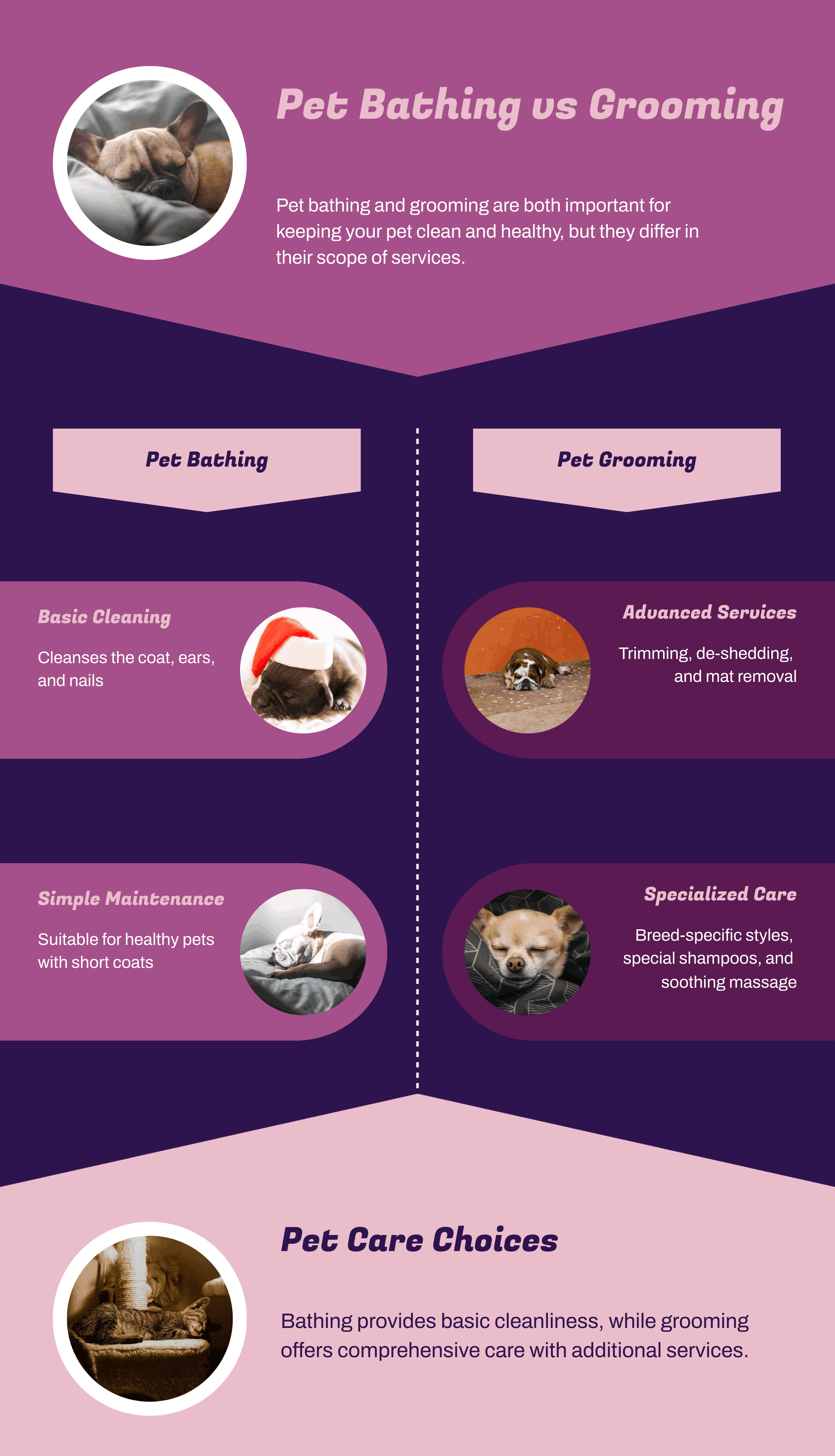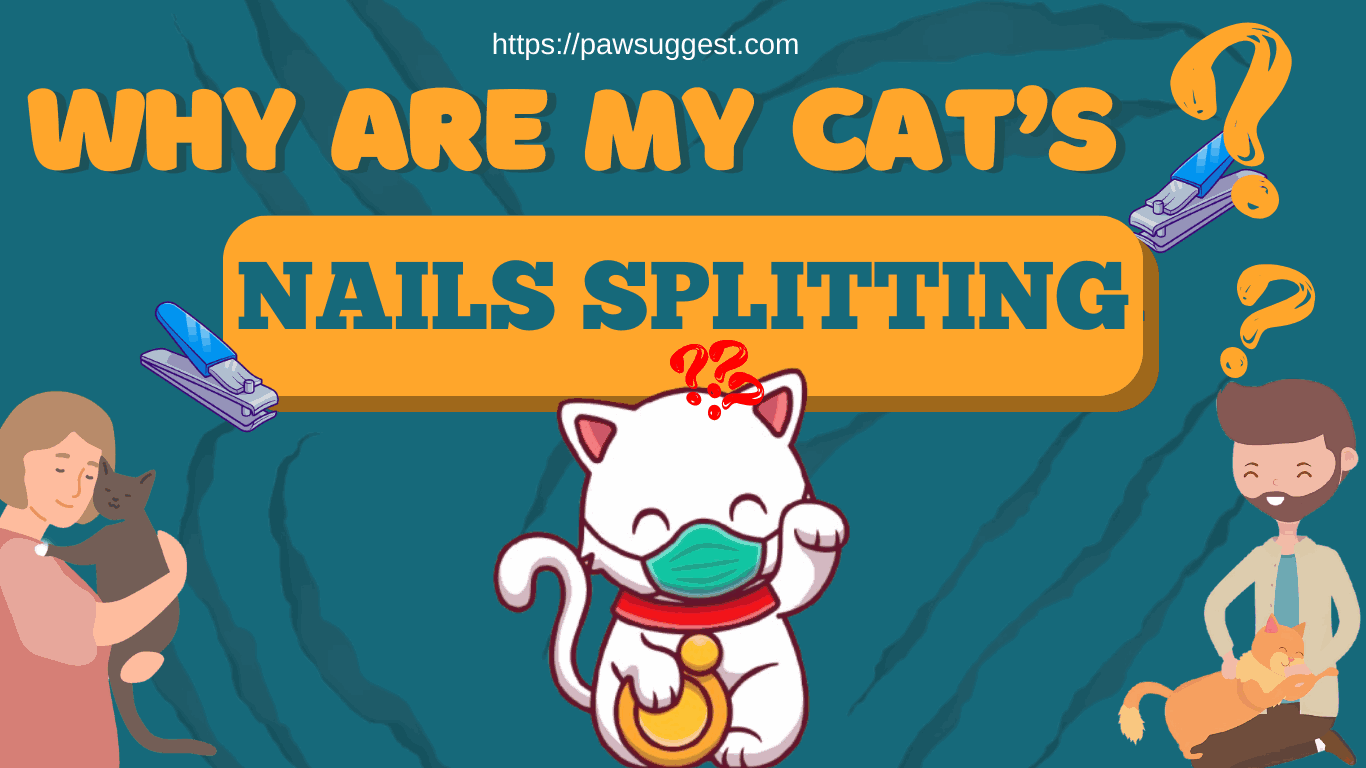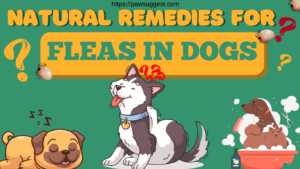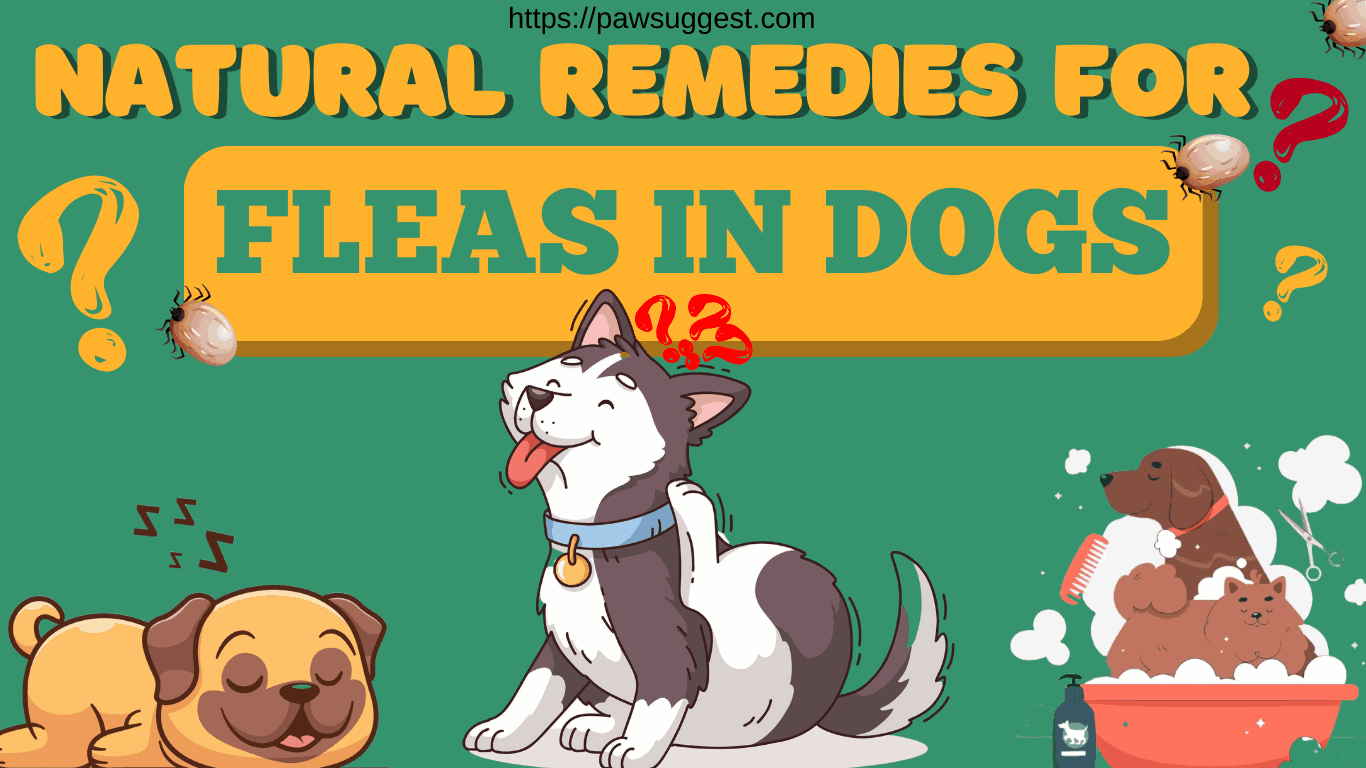
We report cases of fleas on dogs all over the year, but the relation between summer and fleas is different as they both come at the same time. Maybe that’s why you have noticed that your dog is feeling itchy more than usual. Itchiness in dogs between the duration of June and October is primarily because of fleas. So, you did right to seek the natural solution to eliminate fleas on your dog because fleas can cause several diseases where allergy is the most common and least dangerous.

That’s why I’m here to assist you with some natural remedies (recommended by experts) to get rid of fleas. So, let’s get straight into it:
How to Naturally Get Rid of Fleas on Dogs: Step-by-Step!
[su_note note_color=”#72E8E1″ radius=”18″]
To naturally get rid of fleas on dogs, start by vacuuming and washing fabrics to eliminate infestations. Use apple cider vinegar, essential oils, and citrus baths to repel fleas from your dog’s coat. Strengthen immunity with brewer’s yeast and apple cider vinegar in food. Keep your lawn flea-free and prevent re-infestation with lemon spray and baking soda indoors.
[/su_note]
Before Natural Remedies….
Once Fleas have entered your house (through your pet), you must do some hard work even before applying natural remedies.

Vacuum Cleaning
Before anything else, you must vacuum clean your house thoroughly. Not even an inch should be spared in the home. Vacuum cleaning is effective, but if you do it with water, you can get the maximum benefit out of it. Because fleas will be drowned even before getting sucked by the machine.
Machine Washing
Machine wash every fabric in your home, from bedsheets to carpets and even sofa covers. In fact, you have to wash every cloth (including blankets, mats, beds, pillows, and towels) in your home where your dog possibly has spent time. It’s a big task, but you have to do it anyway because you don’t want any bit of fleas. Right?
Steam Cleaning
If you are concerned about machine washing your carpets and soft furnishings, you can go for steam cleaning. It will not just kill fleas but also will make your home cleaner and refreshed.
We recommend you repeat all these processes several times to ensure the infestation is no longer in your home.
- Note: In case of no progress even after using all suitable remedies, you should rather opt for a proper pet bathing session.
Get Rid of Fleas on Your Dog By…
Now, it’s time to do some real work to clear out fleas from your doggy NATURALLY:
1. Nursing Your Dog (From Outside)
Before feeding your dog some remedies, you first have to ensure that there is no flea left on your pet’s body. Because if you go for feeding him and get successful, fleas can again jump in your pup’s body as dogs love licking their skin. Right?
So, here we go:
Apple Cider or Normal Vinegar
For this remedy, you must dilute vinegar or apple cider vinegar (because your dog loves both and fleas hate both). You will do it by adding a 1:1 ratio of both water and vinegar to a container. It is the best ratio you can use, but a few dogs don’t like the smell, so you can make it more dilute by going for a 1:3 ratio.
Now, put the mixture in a spray bottle to spray it on your dog’s body. Never spray it close to the eyes or any open wound. Repeat this task every day for a couple of days. If your dog doesn’t like spray, you can apply the mixture directly to his skin.
Essential Oils
Citronella, peppermint, eucalyptus, tea tree, and rosemary are those essential oils that you can use against fleas. Any available essential oils (diluted) should be used in a spray bottle with water for the best results (if your dog doesn’t mind spraying). Just add a few drops in approximately 400ml water to use on your dog.
But before that, you need to understand that essential oils like tea tree can be hazardous for your dog unless it is adequately thinned. The recommended percentage is 0.1% to 1%.
· Note: Dogs are pretty sensitive to scents of essential oils. So, you first have to bring a small amount of any (available) essential oil close to your pup’s nose to check whether you can use it on your dog or not. We can’t specify any particular oil as every puppy reacts differently in this case.
Citrus Bath
Opting for the citrus bath is maybe the cheapest and easiest way to kill fleas. But where to get citrus? You can simply get it from lemon (and other citrus fruits like orange). But experts always recommend lemon. So, add two cups of lemon juice and your dog’s favorite shampoo or soap to hot water. Boom! Your dog is not just flea-free but also fresh.
Heat
Like their brothers (Vampires), fleas also hate the heat, especially sunlight. So, spend more time (more than usual) with your dog outside in the sunlight to kill fleas naturally. You can also go for a heater, but we all know that sunlight has many other benefits as well.
2. Nursing Your Dog (From Inside)
Now is the ideal time to feed your dog some natural products to kill fleas your pups have swallowed while licking something.
Baker’s or Brewer’s Yeast
Baker’s or brewer’s yeast does not kill fleas directly; it is probably the most obscure way to eliminate and kill fleas from the inside. But we know that a healthy dog can never be a host of fleas. And the most effective, instant, and easiest way to increase your dog’s immunity is by feeding him baker’s or brewer’s yeast. Moreover, it’s not difficult to get it in a household, so add just one tablespoon of yeast to your dog’s regular meal.
Apple Cider Vinegar
We have already used this remedy for external use but will use it again. Because apple cider vinegar will not just help you get rid of fleas but also pacify the overly-alkalized digestive system of your pup. Actually, fleas hate (ACV), and dogs’ stomach loves it. So, let’s kill two birds with one stone (actually THREE!). You have to add ACV to your doggy’s food with water. Do it every day for a couple of days for the best results.
The recommended amount of ACV is no more than just one teaspoon for every 1.13 liters of water. But it is better to ask the vet so that he can recommend the amount according to the weight of your pup. You can slowly rise the amount of apple cider vinegar once your dog starts getting used to its smell and taste.
3. Making Lawn Flea-free
Your dog has gotten rid of fleas, but they still can get to your pup’s body through your lawn, as the lawn is usually the favorite place for insects (including fleas) to live. So, let’s make it fleas-free together:
No Shades
Heat and sunlight again come into play. As fleas hate sunlight, they mostly live under the shades. So, you better make your lawn as shade-less as you can. You should also eliminate damps as they can also find shade there.
Natural Killers
Some natural predators, like snakes, frogs, and lizards, eat fleas. But like me, you could also not like them. If so, you should go for “Nematodes.” You can get these multicellular animals from any plant’s nursery or store. They love killing flea larvae and pupae.
Flea-repelling Plants
Like some animals, there are quite a few plants that hate fleas. So, you must plant them on your lawn because you can’t make your lawn completely shadow-free. Right? Some plants that you can go for are:
- Lavender
- Thyme
- Sage
- Basil
- Mint
- Clove
4. Preventing Fleas From Entering Home
Now, after getting rid of fleas from your home, lawn, and, most importantly, your pup, you must also make your home unfriendly for fleas to avoid them entering your home. Because you don’t want to do all the hard work again. Right? To do that, we also have some natural and easy remedies that work every time:
Lemon and Water
You already know that lemon is super effective against fleas. So, why not use them in your home as well? This is the best advice I can give you if you ask us about preventing fleas in your house in the future. Now, take one or two slices of lemon and put them in water. Wait overnight, and then pour that water into a spray bottle. Spraying lemon water is the best way to do this remedy.
You should spray it every once in a while on the favorite spots of your doggy until you feel that fleas and completely vanished and will never come. The pleasant smell of this spray will also not irritate you and your pup. Another amazing thing about this remedy is that, unlike many natural remedies, this will never be allergic to any dog. So, now you can also spray it directly on the dog.
Brine
If you’re wondering, brine is a mixture of table salt and water. You can pour some brine on the hardwood floor at night. Till the morning, the brine will have done its work and will be dehydrated, so you will also need to be worried about vacuuming it.
Baking Soda
Baking soda is not one of the most effective things experts suggest using to (specifically) KILL fleas. Baking soda will kill larvae and eggs and absorb weird smells from your carpet or floor. You should use it simply like brine or salt.
We’ll never recommend you use brine and baking soda around your dog as they can be toxic. You can use them in the absence of your pup.
- Tips: Never use 2nd or 3rd trick without the recommendation of your vet as the nature of every dog is different, and your doggy might be allergic to salt and baking soda.
Final Verdict
After reading the whole article, the best thing you know is that fleas hate the heat and strong smells. So now, when you will use these remedies, you will know the importance of all of them. Although these remedies are added based on expert advice, if your vet says otherwise, you should always listen to him. It is because he knows better about the nature of your dog, and we all know that every dog can have different allergies.
- Note: Never use that spray bottle that has ever been used to store chemical cleaning products.

